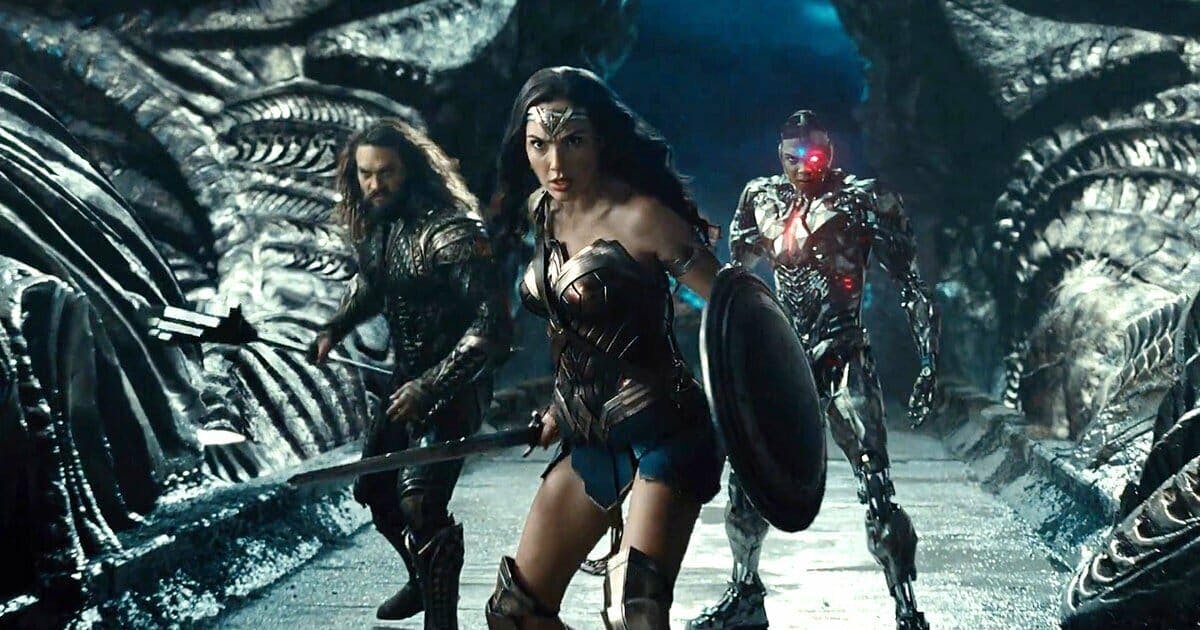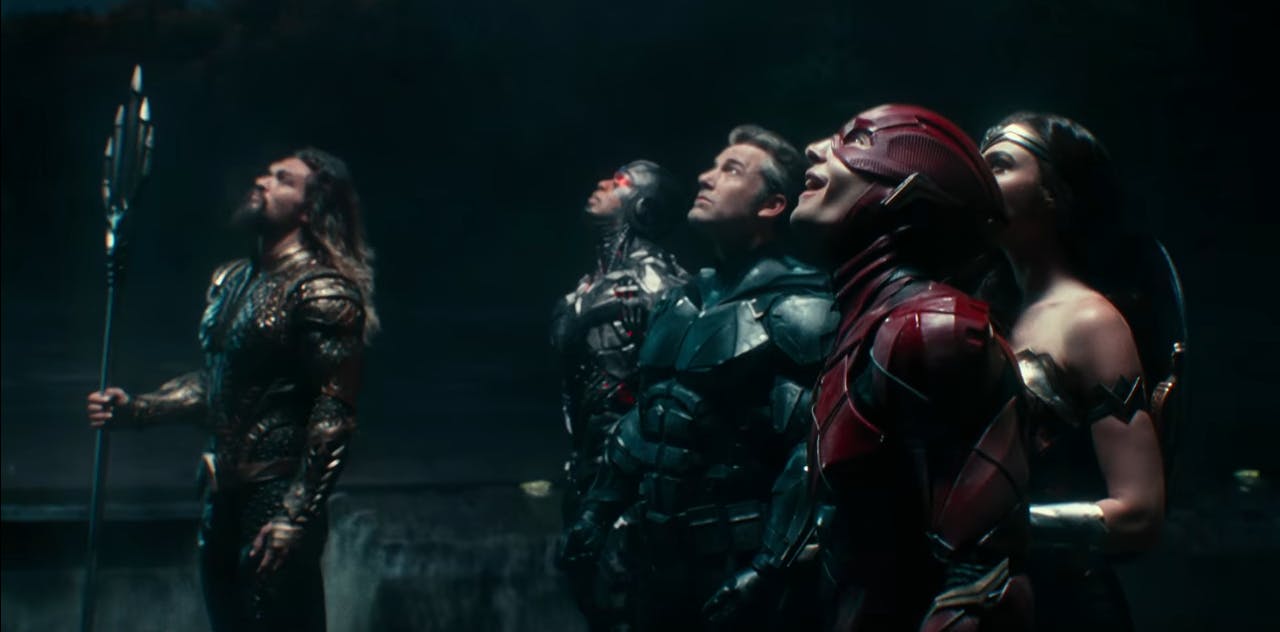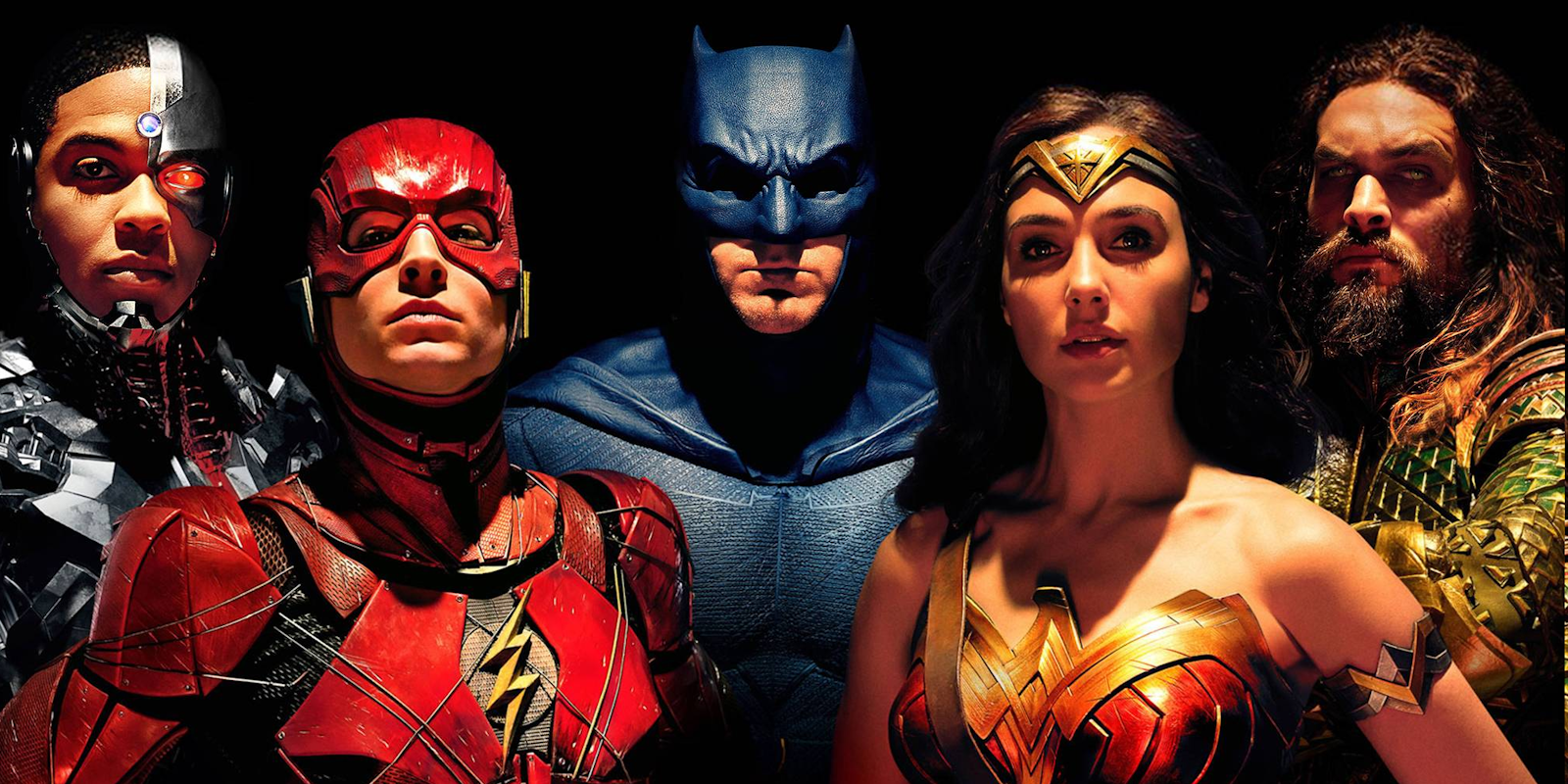Most of Justice League feels like a video game cut scene, but there are some upsides. It isn’t a moral sinkhole like Batman v Superman, and some of the main characters are actually fun to watch.
It’s easy to imagine that Justice League was hastily cobbled together after The Avengers in 2012. It follows exactly the same formula, just with less competence and panache. An alien supervillain (in this case Steppenwolf, voiced by Ciarán Hinds) comes to Earth with an army of drone soldiers, hell-bent on seizing power using a shiny alien device (the Mother Boxes; DC’s answer to Infinity Stones). To defeat him, a superhero team must be formed.
The first third of the film involves each character painstakingly explaining who they are, and what’s going on. Some are more successful than others. I know that Aquaman (Jason Momoa) is fist-pumpingly awesome whenever he’s onscreen, but I couldn’t understand what the hell he and Amber Heard were talking about in their Atlantean exposition scene. His superpowers are similarly unclear, beyond the obvious fact that he can breathe underwater. (There are also some jokes about talking to fish, although sadly we don’t see this happen onscreen. Maybe the fish are giving Aquaman the silent treatment because he’s a cocky asshole.)
You can almost ignore these problems on the basis that Aquaman is easily the coolest-looking hero on the team, sporting intricate armor and what looks like Jason Momoa’s real-life wardrobe of rugged outerwear. Meanwhile the Flash (Ezra Miller) is funny and engaging in a role that could’ve been the Jar Jar Binks of the movie: hyperactive, socially awkward, and scared of fighting. Cyborg (Ray Fisher) is dull compared to his more famous teammates, although his backstory has potential: a dead man who was unwillingly resurrected with cybernetic implants.

Here’s the deal. If you’ve waited your entire life to see a live-action Justice League, you may get something out of this movie. While the CGI is ugly and the fight scenes are bafflingly bad, we do get some entertaining character moments. The Flash is a breakout star, and Wonder Woman (Gal Gadot) continues the charm and compassion of her solo movie. Batman received a drastic overhaul after Batman v Superman, toning down the violence and allowing Bruce Wayne to be more goofy and vulnerable.
Still, it’s hard not to compare this mess to The Avengers, which assembled its team with skillful pacing and an eye for characterization. With the exception of Wonder Woman, the DCEU still feels like a collection of CGI locations for pre-ordained battles. It’s not a coherent comicbook landscape like Tim Burton’s Gotham, and it’s certainly not a realistic universe like the MCU.
Man of Steel rebooted Clark Kent as a gloomy messiah instead of a dorky farmboy, and Batman v Superman compounded the problem with its brutal vision of Batman. Bruce Wayne openly hated Superman for his fearsome power, creating a feud that only ended when they were forced to work together. Justice League takes an interesting new tack with this relationship; perhaps the only surprising aspect the movie.
Following Superman’s death in Batman v Superman, there’s a sense of lost hope across the world. Bruce Wayne privately shoulders the blame for that loss, transforming his hatred into a mournful kind of hero-worship. He assembles the Justice League team in Superman’s image, trying to find a replacement for Krypton’s dead hero. As the story wears on, Wayne’s motives make more sense as a kind of one-sided romance. That’s probably not the film’s intention, but it fits Batman to a tee. Along with Alfred’s snide comments about him being lonely and single, Bruce Wayne is exactly the kind of person who’d fall in love with a dead guy out of guilt. His reactions to Clark Kent are positively sweet, albeit unrequited.

It’s strange to realize that Justice League should be the most celebrated superhero movie in the world. Instead, it gives the impression of a clumsy Avengers knock-off, belatedly grafting humor onto a grim franchise. Also, the forgettable plot has no deeper meaning beyond defeating a CGI monster, which just adds to the overall tone of “video game cut scene.” Released less than a month after the vibrant and richly political Thor: Ragnarok, that’s pretty embarrassing.
Justice League had issues behind the scenes, with director Zack Snyder leaving the production for very real personal reasons. Joss Whedon replaced him, punching up Chris Terrio’s screenplay but retaining Snyder’s murky style of CGI. You can spot some of Whedon’s jokes in the script, and it’s obvious where they had to reshoot Superman’s scenes. Why? Because you can see where they removed Henry Cavill’s mustache in post-production. Even if you’re blissfully unaware of this behind-the-scenes detail, you’ll notice the Uncanny Valley weirdness of Superman’s face. Warner Bros. allegedly spent $25 million on mustache-related CGI, but there’s still something mesmerizingly wrong with Clark Kent’s upper lip.
If you’ve sensed that I’m grading on a curve here, you’re not wrong. By any fair judgment of a superhero blockbuster, Justice League sucks. It’s tonally uneven, the action scenes are ugly and confusing, and the plot feels like it was sketched out in 10 minutes. Yet by comparison to Man of Steel and Batman v Superman, it’s a step up.
With the exception of some tiresome sexism aimed at Diana and the Amazons (yes, they are indeed more sexualized than in Wonder Woman), Justice League treats its main characters with respect. Sure, Superman is a nonentity when he should be an electrifying addition to the team. But Batman is no longer a psychopath, and I find myself genuinely interested in seeing the solo movies for Aquaman and the Flash. Just… preferably not with any involvement from Justice League‘s creative team.


